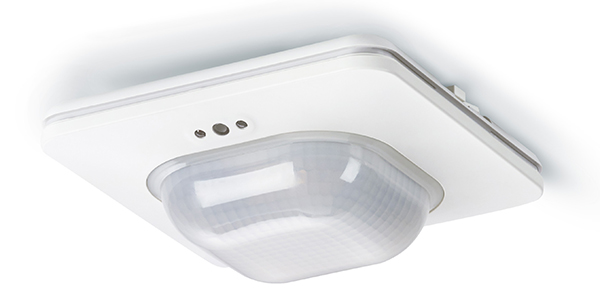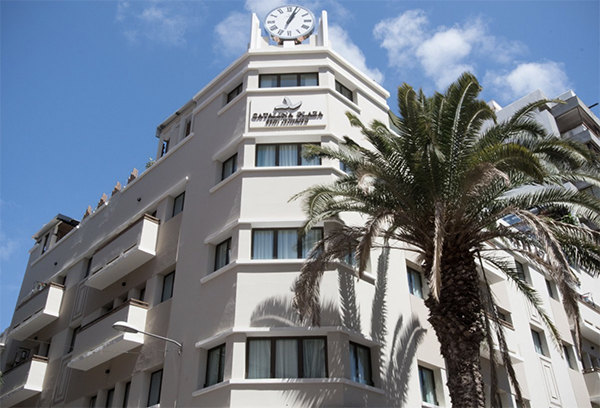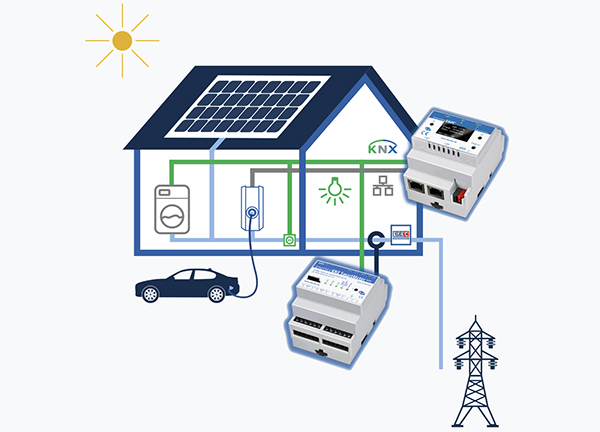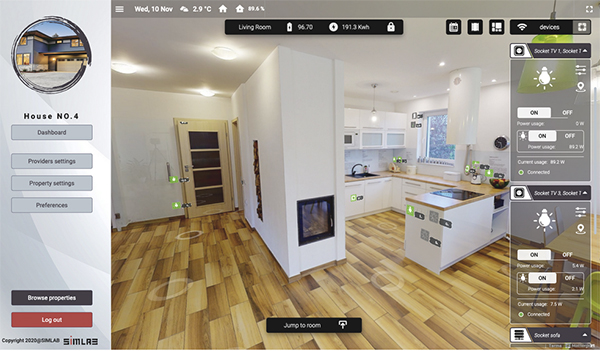
In Part 1 of this two-part series, Yasmin Hashmi asks KNX members for their views on the challenges facing the KNX community in making buildings more energy efficient, and what solutions their companies are bringing to the table in terms of measuring and monitoring.
In light of climate change, increasing energy insecurity, and the fact that buildings consume ~40% of the globe’s energy, managing energy in buildings has never been more crucial. There are many ways in which this can be done, but at a fundamental level, the two most obvious things to do are a) measure how much you are using so you know what effect you are having, and b) monitor whether anyone is present so that things can be switched off if not needed. Of course, this is the simplistic version, as things can get much more clever than that.

Robert Zizlsperger, Head of KNX Room Systems for Siemens AG, suggests that the key to managing energy efficiently in a building, is to start with each room.
“Users expect good lighting conditions, comfortable temperature levels and fresh air at their workplace or home. A well-designed and well-configured room control system provides these conditions when the room or space is occupied. When the space is unoccupied, lighting is turned off and the temperature is lowered from ‘comfort’ to ‘pre-comfort’ level during the day and to ‘night mode’ after hours. Ventilation is activated and controlled based on the room’s CO2 level. Modern presence detectors with temperature and CO2 sensors manage lighting, temperature, and air quality, providing desired room conditions with high energy efficiency. Reducing the energy demand in the space lowers the energy consumption in the central air conditioning and heating/cooling plants. This also affects the required electrical energy for these central plants. In summary, smart room control is the basis for the smart building, and energy-conscious design of room control with modern presence detectors will have an impact on the operational cost and energy usage of a building.”


Peter Janke, Managing Director of Lingg & Janke, notes that the more architects, planners and installers cooperate on a project, the more knowledge can be shared and the greater the energy efficiencies that can be achieved. Of course an essential requirement of managing energy is being able to measure its consumption in the first place, which is why Peter points us to the Lingg & Janke range KNX metering products.
“We offer a selection of meters from different metering manufacturers for different media. This means that we have meters for electricity, heat (warm water), water and gas. All meters are equipped with KNX interfaces manufactured by us, and these comply with the new KNX Secure standard. This means that metering data can be transmitted securely, in an encrypted form, so that it can neither be read nor manipulated by hackers.”


Javier Aguirre Estalella, Global Sales Manager for Zennio argues that we need better communication between regulation and certification.
“Certifications such as BREEAM or LEED have huge international recognition, yet international, national (and even local) regulations, can often differ. Most of these regulations focus on energy production and insulation, but not on energy usage or control. You could have the most efficient heating production system on the market and get an A+ even if you have all of the windows open in the winter! Certifications are often better at tackling this than regulations, and actually assess what happens with the heating system if a window is open. In short, worldwide building regulations would benefit from taking a more holistic approach to the energy journey within a building.”
Javier goes on, “Knowing how much energy is being used and where, is definitely the first step. For this reason, we have some unique KNX devices for energy monitoring, such as KES Plus, KCI 4 S0 or KEM, which provide real consumption data to the KNX bus. Once we know what’s happening, we can take action to reduce energy waste to a minimum. This is typically achieved via simple logic. What happens when a window is opened, when a room is empty or when direct sun is overheating a room? These situations can easily be taken into account using the logic modules that are in most of our devices, removing the need for an additional logic device.”
As far as noteworthy examples of real-world implementations go, Javier suggests “Pick any of the hotels our partners have completed all over the world. Catalina Plaza in Las Palmas would be one of my favourites, where room policies virtually eliminate energy waste and managers know how much energy each guest is using, but also guests themselves are notified in real-time how energy efficient they are being.”


Dr.-Ing. Michael Schuster, CEO of Enertex Bayern GmbH maintains that simplifying the optimisation of consumption of locally-generated renewable energy is the most challenging task for lowering the energy demand of buildings, including storage systems and e-vehicles.
“We must make the energy management system easy to use, otherwise it will never reach the end customer, no matter how efficiently it works. Our Enertex KNX SmartMeter measures currents and voltages, harmonic distortion, and power in 4 quadrants with high precision in the range of 2mA – 85A and 10mA – 630A. This unit is the base input for our EibPC², a fully-programmable device that includes ready-to-use applications that make things very easy and straightforward. For example, we have applications for connection to vehicle-charging wallboxes from KEBA and Ego for example, in combination with measurement of locally-produced solar energy with an Enertex KNX Smartmeter as an integrated ready-to-use system. These systems are widely used by our customers and there are also highly-adapted and optimised examples in use.”


Marek Kozlak, Founder and CEO of SIMLAB wants to see the consumption of fossil fuels reduced by providing balanced energy management and automated energy consumption optimisation.
“The main factor responsible for the increased demand for electricity in buildings is related to global warming, which results in an increasing demand for cooling. Our SIM-ON digital twin home operating system has been presented as the first KNX IoTech solution. We developed a unified communication platform that uses controllers such as the Schneider Electric KNX IoT 3rd Party API server, to access each KNX-supported building. Using this bridge connection, SIM-ON is able to grab information from all KNX compatible devices and their status data in order to display them within a 3D scan of the facility. It adds connectivity to KNX installations in record time, which enables a new dimension of control and interaction. A clear overview of all devices’ electricity consumption is visible in the spatial interface together with an analytic tool that helps users to optimise the energy management of the system.”
Marek adds, “SIM-ON will be equipped with AI algorithms that will prompt or fully manage devices in terms of reducing energy consumption. The advisory system will be able to suggest specific actions to the user (e.g. increasing the temperature by 1°C on a hot day) or, depending on the activated functions, change settings automatically.”

In Part 2, we look at expanding the connectivity of KNX in order to maximise energy efficiency.
Yasmin Hashmi is the Editor of KNXtoday magazine.












